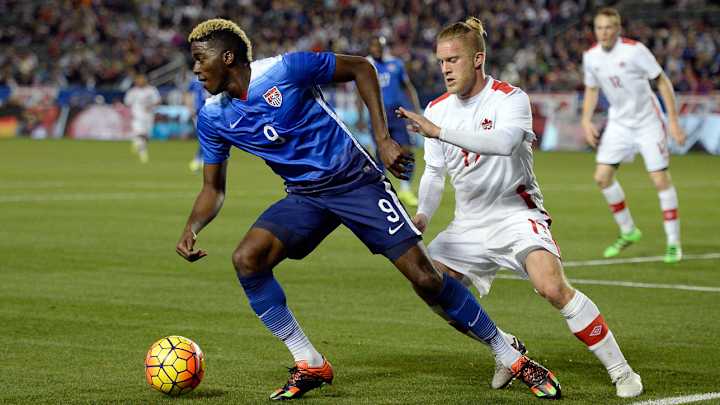USMNT Draws Canada, Cuba for 1st Concacaf Nations League

Concacaf has joined in on the Nations League movement, following UEFA's lead in creating another competition to largely take the place of friendlies on the international calendar.
There's not really a shiny prize at the end of the road. Much like in UEFA, where the winner of the European Championship will be considered the region's finest squad as opposed to the Nations League winner, Concacaf's champion will be whoever emerges on top at the Gold Cup this summer. Unlike in UEFA, however, there's no further incentive for teams in Concacaf's Nations League. UEFA's Nations League offered potential playoff berths for the chance to qualify for the Euros. There's no such parallel path in North and Central America and the Caribbean.
The Nations League, especially in Concacaf, is more of a tool to help lift up the smaller, less-successful national teams by providing more structured competition against bigger opponents outside of earlier World Cup qualifying rounds.
Wednesday night's draw in Las Vegas yielded the groups that will begin play in the fall.
The USA drew Canada and Cuba in Group A in League A, with the winner advancing to the semifinals next March, the loser being relegated to League B and the second-place finisher staying put for the next go-around. The other teams in the top pot in League A wound up as follows: Mexico drew Panama and Bermuda; Honduras drew Trinidad & Tobago and Martinique; Costa Rica drew Haiti and Curacao.
The full draw for the other leagues, whose group winners are vying for promotion, went like this:
.@Concacaf Nations League Groups are defined!
— Concacaf Nations League (@CNationsLeague) March 28, 2019
What matchup are you most looking forward to? #CNL pic.twitter.com/kpsQja1qJj
If there aren't any major surprises, Concacaf will wind up with a semifinal featuring the USA, Mexico, Honduras and Costa Rica, which isn't too unfamiliar when it comes to the top teams in the region. The gap between the top tier and lower tiers is sizeable, the narrowing of which is one of the points of the competition. In some cases, it may come down to which team beats on the perceived longshot the most in order to go through via goal differential. There's no given the USA will advance, of course, not after the most recent World Cup qualifying debacle and not with Canada fostering some solid young talent, such as Bayern Munich winger Alphonso Davies.
There's also the matter of how seriously coaches take the competition. Perhaps they elect to use it as an opportunity to see younger, less-experienced players in a competitive atmosphere (though with Olympic qualifying set for the fall, the top group of U-23s will be preoccupied). Perhaps they go all out, a chance to establish a stronger foothold in the region if things don't go so swimmingly during the Gold Cup.
Facing the Canadians (against whom the U.S. has a 14-8-11 record all-time but hasn't played a competitive match on Canadian soil since 1997) and the Cubans (against whom the U.S. is 10-1-1) in the October and November international windows will give the USA neighboring opponents they're not used to seeing with regularity. It's been over three years since the USA last played Canada, and it'll be three years in October since the U.S. last faced Cuba.
Whether renewing and strengthening those rivalries all while trying to reassert dominance in the region is more beneficial than staging a friendly against a stronger opponent remains to be seen, but the USA's 2019 dance card, save for the September FIFA window, is now full. It'll be two friendlies before the Gold Cup, the summer competition and then the Nations League group phase in what is going to wind up as a very Concacaf-heavy year.
